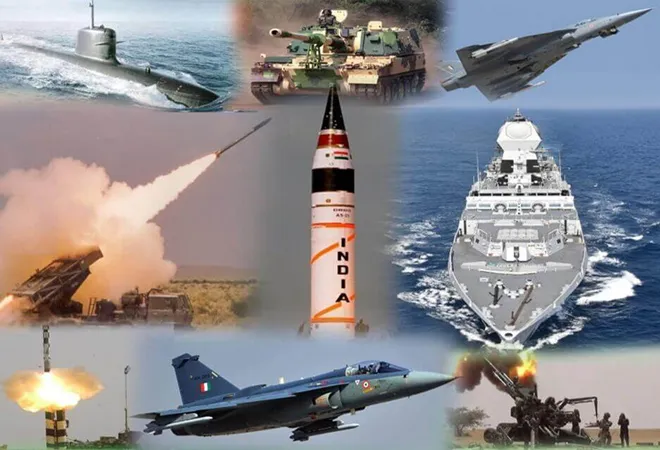The defence sector plays a crucial role in ensuring the safety and security of any nation. It has always been a key area of focus for the government, as the country faces complex security challenges both from within and outside its borders. India’s defence sector is not just about military readiness but also an essential element of economic growth, technological advancements, and self-reliance.
Key Aspects:
India’s defence sector is divided into three branches: the Army, Navy, and Air Force. These forces work to protect the country from external threats and maintain peace within its borders. This sector has evolved significantly over the past few decades. This involves acquiring cutting-edge technologies, upgrading existing systems, and increasing the production of indigenously developed defence equipment.
The Indian government has launched several initiatives to boost the indigenous defence industry, including the “Make in India” program. A critical focus has also been on “Atmanirbhar Bharat” (self-reliant India), which aims to reduce India’s dependence on foreign arms and equipment.
The Role of DRDO:
One of the main drivers of innovation in India’s defence sector is the DRDO. They is responsible for designing and developing advanced weapons and technologies to meet the needs of the armed forces. It has also produced a variety of cutting-edge systems. It includes the Agni series of missiles, the Tejas fighter aircraft, the Arjun battle tank, and the BrahMos missile.
Key Areas of Focus:
- Indigenous Production: In recent years, India has prioritized self-reliance in defence production. The aim is to reduce reliance on foreign imports and boost the local manufacturing sector.
- Technological Advancement: The country is also investing in the development of cutting-edge technologies, including artificial intelligence (AI), drones, and cyber defence.
- Modernization of Forces: Modernising military equipment like tanks, aircraft, and ships is also vital for enhancing India’s defense capabilities.
Example: INS Vikrant
A standout achievement in India’s defence sector is the INS Vikrant, the country’s first indigenously built aircraft carrier. Commissioned in 2022, INS Vikrant is a symbol of India’s growing naval power and technological expertise. The ship, can carry over 30 aircrafts. It is also capable of providing air support in maritime operations and enhancing India’s presence in the Indian Ocean region, which is a key strategic area.
The development of INS Vikrant was a significant step towards reducing India’s reliance on foreign military equipment. This also showcases the country’s growing capacity to build complex defence systems locally. The ship was built at the Cochin Shipyard in Kerala and serves as a testament to India’s expanding capabilities in shipbuilding and defence technology.
Future Prospects:
Looking ahead, India also aims to become a global hub for defence manufacturing and export. With the increasing involvement of private sector companies and the growing emphasis on research and innovation, the country’s defence sector is thus poised for significant growth. As technology evolves, India is also investing in cyber warfare, space defence, and unmanned systems to meet the challenges of modern warfare.
Conclusion:
The defence sector in India is integral to the country’s security and economic growth. It continues to grow, supported by increasing investments in research, development, and manufacturing. The country is thus moving towards becoming more self-reliant in defence production, and with projects like the INS Vikrant. Through continued innovation, self-reliance, and strategic partnerships, India is strengthening its position as a major player in global defence.
– Ketaki Dandekar (Team Arthology)
Read more about Defence Sector here – https://indiafoundation.in/articles-and-commentaries/defence/
